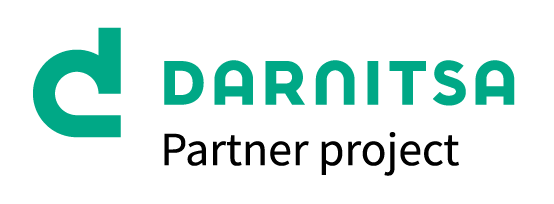Pharma is new IT for Ukraine.
7 facts that prove it
7 facts that prove it
Innovative technologies in medicine and pharmaceutical industry will soon change the world as dramatically as the Internet did in the 1990s. What is the role of Ukraine?
What is Ukrainian pharma?
During the first years of independence, the pharmaceutical industry of Ukraine experienced chaos. The main problems of that time were a major shortage of drugs in municipal pharmacies, lack of currency for the purchase of drugs and the total absence of rules in the market.
In the late 1990s, competition emerged, and private companies weakened the influence of municipal pharmacies. During the 1998 crisis, many manufacturers, distributors and pharmacies that lived for the day were forced to leave the market.
Those who had a good material and technical base and a development plan survived. Today, these companies continue to operate.
Since the early 2000s, the pharmaceutical industry has revived growth. Distribution created a new business development model – vertical integration of the wholesale operator and the pharmacy chain.
For almost three decades, Ukrainian drug manufacturers have transformed from soviet plants to successful pharmaceutical companies that invest millions of dollars in production standards, marketing, advertising, and research.
They manufacture drugs with the help of complex technological processes, paving the way for the manufacture of analogue drugs with a similar source molecule (biosimilars).
Today, the Ukrainian pharmaceutical industry is a fast-growing, innovative and attractive industry for investors.
7 facts that prove it:
In the late 1990s, competition emerged, and private companies weakened the influence of municipal pharmacies. During the 1998 crisis, many manufacturers, distributors and pharmacies that lived for the day were forced to leave the market.
Those who had a good material and technical base and a development plan survived. Today, these companies continue to operate.
Since the early 2000s, the pharmaceutical industry has revived growth. Distribution created a new business development model – vertical integration of the wholesale operator and the pharmacy chain.
For almost three decades, Ukrainian drug manufacturers have transformed from soviet plants to successful pharmaceutical companies that invest millions of dollars in production standards, marketing, advertising, and research.
They manufacture drugs with the help of complex technological processes, paving the way for the manufacture of analogue drugs with a similar source molecule (biosimilars).
Today, the Ukrainian pharmaceutical industry is a fast-growing, innovative and attractive industry for investors.
7 facts that prove it:
1. Growing industry
The annual growth rate of the pharmaceutical sector in recent years has reached an average of 11%. The contribution of the industry to GDP in 2017 is UAH 24.6 billion, which is equal to 0.83% (according to the State Statistics).
The Ukrainian drug market has not yet recovered from the 2014–2015 crisis, but it is constantly growing. At the same time, the market structure has changed in favour of domestic manufacturers.
Nine years ago, foreign companies led by German Berlin-Chemie were leaders in Ukraine. The change of players began in 2010. The devaluation of the hryvnia in 2014 strengthened the position of Ukrainian manufacturers. Domestic Darnitsa, Farmak, Arterium and Zdorovye entrenched in the top 5 manufacturers.
In 2016, 1.115 billion drug packages were sold through Ukrainian pharmacies, and in 2018 – 1.144 billion. In terms of money, the pharmacy market has increased by 11% per year over the past three years.
Growth was facilitated by the production of more affordable Ukrainian counterparts of imported drugs, which are 4-16 times cheaper.
Today, almost all foreign drugs popular in Ukraine have clones – Mezym, No-Spa, Aspirin, Nurofen, Viagra, Fastum gel. A significant part of import, which is about USD 1.5 billion per year, can be replaced by domestic drugs.
Another growth driver is the purchase of drugs through hospitals. On average for 2010-2018 there was a 7% growth in the hospital drug market. Over the past two years, it has more than doubled: in 2016 – 50 million packages, and in 2018 – 134 million.
The Ukrainian drug market has not yet recovered from the 2014–2015 crisis, but it is constantly growing. At the same time, the market structure has changed in favour of domestic manufacturers.
Nine years ago, foreign companies led by German Berlin-Chemie were leaders in Ukraine. The change of players began in 2010. The devaluation of the hryvnia in 2014 strengthened the position of Ukrainian manufacturers. Domestic Darnitsa, Farmak, Arterium and Zdorovye entrenched in the top 5 manufacturers.
In 2016, 1.115 billion drug packages were sold through Ukrainian pharmacies, and in 2018 – 1.144 billion. In terms of money, the pharmacy market has increased by 11% per year over the past three years.
Growth was facilitated by the production of more affordable Ukrainian counterparts of imported drugs, which are 4-16 times cheaper.
Today, almost all foreign drugs popular in Ukraine have clones – Mezym, No-Spa, Aspirin, Nurofen, Viagra, Fastum gel. A significant part of import, which is about USD 1.5 billion per year, can be replaced by domestic drugs.
Another growth driver is the purchase of drugs through hospitals. On average for 2010-2018 there was a 7% growth in the hospital drug market. Over the past two years, it has more than doubled: in 2016 – 50 million packages, and in 2018 – 134 million.

With the growing purchasing power of Ukrainians, the growth of the pharmaceutical market will potentially be explosive, which will determine the enormous increase in the company profits in each segment – from pharmaceutical plants to pharmacy chains.
Global challenges – the ageing of the population, the growth of chronic diseases, and the emergence of new technologies – annually increase the cost of healthcare in the world. Today, this indicator in developed countries reaches 10% of GDP.
2. Investment and innovation
The pharmaceutical industry in developed countries is the leader in added value and investment in research and development (R&D). Companies spend about 15% of net sales for these goals. For comparison: IT companies invest 10% of sales in software development.
In terms of investment intensity, Ukrainian pharma is inferior only to the food industry: UAH 1 of added value in the pharmaceutical industry equals to 19 kopecks of capital investment.
In the early 2018, capital investment in production reached USD 88 million. Foreign direct investment is more difficult. Their level has not yet reached the pre-crisis one, while it is above the industry average. In 2012-2018 capital investment almost doubled – from USD 642 million to USD 1.04 billion.
Ukrainian pharma is considered to be one of the most developed in the post-Soviet countries. But the share of production of innovative drugs does not exceed 9% of the total market. The reason is the high cost and duration of the process. Investing in the creation of a single molecule can require billions of dollars, and the whole process — development, clinical research, and, if successful, market launch – can take up to 12 years.
According to the Expert Center of the Ministry of Health, at the end of February of this year, only 1.2 clinical research were conducted in Ukraine per 100,000 people, whereas in Poland – 4.3.
Why are own R&D important if they require significant investment?
Beneficiaries are: patients receiving free access to innovative but unregistered drugs; the Ministry of Health through the introduction of international standards, practices and equipment upgrades; investors – in the form of high financial returns.
In terms of investment intensity, Ukrainian pharma is inferior only to the food industry: UAH 1 of added value in the pharmaceutical industry equals to 19 kopecks of capital investment.
In the early 2018, capital investment in production reached USD 88 million. Foreign direct investment is more difficult. Their level has not yet reached the pre-crisis one, while it is above the industry average. In 2012-2018 capital investment almost doubled – from USD 642 million to USD 1.04 billion.
Ukrainian pharma is considered to be one of the most developed in the post-Soviet countries. But the share of production of innovative drugs does not exceed 9% of the total market. The reason is the high cost and duration of the process. Investing in the creation of a single molecule can require billions of dollars, and the whole process — development, clinical research, and, if successful, market launch – can take up to 12 years.
According to the Expert Center of the Ministry of Health, at the end of February of this year, only 1.2 clinical research were conducted in Ukraine per 100,000 people, whereas in Poland – 4.3.
Why are own R&D important if they require significant investment?
Beneficiaries are: patients receiving free access to innovative but unregistered drugs; the Ministry of Health through the introduction of international standards, practices and equipment upgrades; investors – in the form of high financial returns.

The industry should focus on efficient technologies while retaining innovation incentives. This requires more flexible and dynamic approaches to decision-making, based on the health technology assessment (ОМТ). OMT refers to non-financial incentives for pharmaceutical R&D.
We allocate 10% of our gross income to R&D. It's not just about production modernization. We digitalize our document workflow and lifecycle of drugs.
3. "Pharmaceutical visa-free regime"
Ukrainian pharmaceutical manufacturers are certified according to the international GMP (Good Manufacturing Practice) standard. This is one of the main global standards, which defines the requirements for the manufacture of medicines and dietary supplements.
Only in 2016-2018, nine Ukrainian companies received a GMP certificate from the European Union: Darnitsa, Farmak, Borshchahivskiy Chemical-Pharmaceutical Plant (BCPP), Technolog, Yuria-Pharm, Sinbias Pharma and Ukrvetprompostach.
Over the same period, according to EudraGMDP, Belarus received one GMP, Russia – 18, Turkey – 34, Romania – 75.
GMP provides for many indicators that manufacturers must comply with. Pharmacists should comply with written requirements for each stage of manufacture.
For example, GMP requires the manufacturer to have "very clean workshops." Increased sterility of the process in such premises is achieved by personnel entrance locks, a special air filtration mode, etc.
Only in 2016-2018, nine Ukrainian companies received a GMP certificate from the European Union: Darnitsa, Farmak, Borshchahivskiy Chemical-Pharmaceutical Plant (BCPP), Technolog, Yuria-Pharm, Sinbias Pharma and Ukrvetprompostach.
Over the same period, according to EudraGMDP, Belarus received one GMP, Russia – 18, Turkey – 34, Romania – 75.
GMP provides for many indicators that manufacturers must comply with. Pharmacists should comply with written requirements for each stage of manufacture.
For example, GMP requires the manufacturer to have "very clean workshops." Increased sterility of the process in such premises is achieved by personnel entrance locks, a special air filtration mode, etc.

GMP is a so-called "pharmaceutical visa-free regime" that opens access to Ukrainian drugs to overseas markets.
Now GMP standards are a mandatory requirement for all industry participants, and their maintenance is an ongoing process. The potential of the leading Ukrainian manufacturers allows companies to enter foreign markets, which makes it necessary to constantly improve manufacturing practices for competitive growth.
Of interest in the production segment are market leaders who have European GMP certification, produce branded generics and are highly financially stable. They can afford to successfully compete with import for many years, and also maintain the possibility of segment consolidation.
4. Export geography
Ukraine occupies the 61st line in the world ranking of pharmaceutical products exporters, selling drugs abroad for USD 180 million a year. The peculiarity of Ukrainian export is innovative products with high added value.
Ukrainian manufacturers master the markets of all continents, including the Middle East, North Africa, Latin America and South-East Asia – this market is particularly difficult to break through.
Following the results of 2018, Brazil (USD 17 million) and Iraq (USD 4 million) unexpectedly entered the top 10 export directions.
The main importers of Ukrainian drugs remain the post-Soviet countries. The first place is taken by Uzbekistan, where last year drugs were delivered for USD 41 million. Then Kazakhstan and Russia (USD 19 million each), Belarus (USD 16 million), Moldova (USD 14 million), Azerbaijan (USD 11 million), Georgia (USD 9 million), Kyrgyzstan (USD 5 million).
Deliveries to the Russian Federation after the occupation of the Crimea and part of the Donbas were significantly reduced (data from Russian customs). If in 2013 the export volume in this direction exceeded USD 55 million, in 2018 it was USD 19 million, and in the first quarter of 2019 it was USD 3.8 million.
And such a huge sales market has yet to find a replacement. If you look at the dynamics of Ukrainian pharma export since 2010, in 2014-2015 it was significantly reduced, and by 2018 it only began to recover to the level eight years ago.
Ukrainian manufacturers master the markets of all continents, including the Middle East, North Africa, Latin America and South-East Asia – this market is particularly difficult to break through.
Following the results of 2018, Brazil (USD 17 million) and Iraq (USD 4 million) unexpectedly entered the top 10 export directions.
The main importers of Ukrainian drugs remain the post-Soviet countries. The first place is taken by Uzbekistan, where last year drugs were delivered for USD 41 million. Then Kazakhstan and Russia (USD 19 million each), Belarus (USD 16 million), Moldova (USD 14 million), Azerbaijan (USD 11 million), Georgia (USD 9 million), Kyrgyzstan (USD 5 million).
Deliveries to the Russian Federation after the occupation of the Crimea and part of the Donbas were significantly reduced (data from Russian customs). If in 2013 the export volume in this direction exceeded USD 55 million, in 2018 it was USD 19 million, and in the first quarter of 2019 it was USD 3.8 million.
And such a huge sales market has yet to find a replacement. If you look at the dynamics of Ukrainian pharma export since 2010, in 2014-2015 it was significantly reduced, and by 2018 it only began to recover to the level eight years ago.

5. Striking potential
Drug consumption in Ukraine is significantly lower than in EU countries. If one Ukrainian spends an average of USD 73 for drugs per year, then, for example, an Estonian spends USD 258, and a Swede spends USD 509.
The fact is that Ukrainian citizens buy 99% of drugs for their own money. While in the West most drug costs are covered by insurance and special state programs. The launch of such programs in Ukraine can provide the impetus for the market.
According to the CF "Patients of Ukraine", only 20% of citizens in case of illness turn to a family doctor or therapist, 32% are self-treated with drugs, 20% with folk remedies, 6% are consulted by a pharmacist or chemist.
On a positive note, Ukrainians began to buy more prescription drugs, which implies the involvement of a doctor in the medicine choice.
According to Proxima Research, over ten years, the ratio of prescription and non-prescription drugs in the Ukrainian consumer basket has become almost the opposite: if in 2008 it was 33% and 67% in physical terms, in 2018 it was 60% and 40%, respectively.
Since 2017, the state covers part of the expenses of Ukrainians for drugs. The program "Available drugs" includes 23 names of drugs for cardiovascular diseases, diabetes and bronchial asthma.
In the first year of the program, UAH 627 million was allocated, and in 2018 – more than UAH 1 billion. As a result, the consumption of drugs, the cost of which is reimbursed by the state, increased by 65% in the very first year, and by 36% in the next year.
State participation in procurement and reimbursement of drug costs is one of the drivers of growth in the domestic market. Medical reform implies, in general, to allocate 5% of GDP from the state budget to healthcare. Last year, this indicator was about 4%.
The fact is that Ukrainian citizens buy 99% of drugs for their own money. While in the West most drug costs are covered by insurance and special state programs. The launch of such programs in Ukraine can provide the impetus for the market.
According to the CF "Patients of Ukraine", only 20% of citizens in case of illness turn to a family doctor or therapist, 32% are self-treated with drugs, 20% with folk remedies, 6% are consulted by a pharmacist or chemist.
On a positive note, Ukrainians began to buy more prescription drugs, which implies the involvement of a doctor in the medicine choice.
According to Proxima Research, over ten years, the ratio of prescription and non-prescription drugs in the Ukrainian consumer basket has become almost the opposite: if in 2008 it was 33% and 67% in physical terms, in 2018 it was 60% and 40%, respectively.
Since 2017, the state covers part of the expenses of Ukrainians for drugs. The program "Available drugs" includes 23 names of drugs for cardiovascular diseases, diabetes and bronchial asthma.
In the first year of the program, UAH 627 million was allocated, and in 2018 – more than UAH 1 billion. As a result, the consumption of drugs, the cost of which is reimbursed by the state, increased by 65% in the very first year, and by 36% in the next year.
State participation in procurement and reimbursement of drug costs is one of the drivers of growth in the domestic market. Medical reform implies, in general, to allocate 5% of GDP from the state budget to healthcare. Last year, this indicator was about 4%.

"Available Medicines" is an evolutionary continuation of the reimbursement program for hypertensive patients, which has been valid since 2013. Millions of Ukrainians, impoverished due to constant healthcare reforms and lacking access to effective and safe medicines, have been waiting for program introduction for many years.
"Available Medicines" are necessary for Ukrainians. This area will become increasingly promising for the pharmaceutical industry. Here the new administrator of the program, the National Health Service, and digitalization, which has been introduced since April 2019, will play an important role.
6. Valuable talents
Pharma generates almost 1% of Ukraine's GDP, but at the same time it employs 0.15% of all employed Ukrainians.
According to the Top Lead marketing company, one employee in the Ukrainian pharmaceuticals for the year creates gross added value in the amount of UAH 900,000.
For comparison: one IT specialist – UAH 800,000, and in the agro-industrial complex this indicator is 10 times lower than in pharmaceuticals.
One of the key reasons for such indicators is the training of highly qualified personnel. 28 Ukrainian universities prepare masters in pharmaceuticals with more than 9,000 students from different countries of the world.
But the problem is that Ukrainian education so far is behind on industrial development. In general, universities prepare specialists for the pharmacy segment, and in the field of biotechnology there is an acute shortage of personnel. Pharmaceutical companies have to fill in the gaps themselves.
Major market players have launched internship programs. It is already obvious that the demand for skilled personnel in the pharmaceutical industry will grow in direct proportion to the growth of research and innovation.
According to the Top Lead marketing company, one employee in the Ukrainian pharmaceuticals for the year creates gross added value in the amount of UAH 900,000.
For comparison: one IT specialist – UAH 800,000, and in the agro-industrial complex this indicator is 10 times lower than in pharmaceuticals.
One of the key reasons for such indicators is the training of highly qualified personnel. 28 Ukrainian universities prepare masters in pharmaceuticals with more than 9,000 students from different countries of the world.
But the problem is that Ukrainian education so far is behind on industrial development. In general, universities prepare specialists for the pharmacy segment, and in the field of biotechnology there is an acute shortage of personnel. Pharmaceutical companies have to fill in the gaps themselves.
Major market players have launched internship programs. It is already obvious that the demand for skilled personnel in the pharmaceutical industry will grow in direct proportion to the growth of research and innovation.

7. Generics – "gold mine"
The global pharmaceutical market is waiting for a "patent cliff" – a period of mass expiration of patents for popular drug brands. This will allow Ukrainian companies to manufacture generics – authorized copies of original drugs.
Such drugs are much cheaper than originals, which guarantees high demand.
Most patents in the industry were registered in the late 1980s – early 1990s. Their validity period is 20 years with the possibility of renewal for at most five years.
For Ukrainian companies, this is a "gold mine". The manufacture of generics does not require huge investments, as an innovative pharma.
According to ARK Invest, it will take USD 4-8 million and 3-5 years to create and launch a generic drug.
Market participants emphasize that more than 99% of all medicines from domestic manufacturers now are generics and "traditional drugs".
Relying on drugs that are out of patent protection is a trend in emerging markets, while proprietary drugs, according to PwC forecasts, will come down in the foreseeable future.
Such drugs are much cheaper than originals, which guarantees high demand.
Most patents in the industry were registered in the late 1980s – early 1990s. Their validity period is 20 years with the possibility of renewal for at most five years.
For Ukrainian companies, this is a "gold mine". The manufacture of generics does not require huge investments, as an innovative pharma.
According to ARK Invest, it will take USD 4-8 million and 3-5 years to create and launch a generic drug.
Market participants emphasize that more than 99% of all medicines from domestic manufacturers now are generics and "traditional drugs".
Relying on drugs that are out of patent protection is a trend in emerging markets, while proprietary drugs, according to PwC forecasts, will come down in the foreseeable future.
Today, pharmaceuticals are talked about only in narrow circles, but this will soon change. Healthcare is a new "hype" for the following 20 years. Innovative technologies in medicine and pharmaceuticals will soon change the world as dramatically as the Internet did in the 1990s.
The arrival of foreign investors is only a matter of time. The prospect of Ukraine is the growth of the market by several times. As soon as the influence of country risk decreases, we can expect transactions in all segments of the pharmaceutical market, because each of them has very successful and investment-attractive companies.
The attractiveness of the pharmaceutical market is positively affected by the increasing purchasing power of the population since 2016, expanding in budget, the number of drugs included and the number of participating pharmacies of the reimbursement program, the stable 20+% growth of the market in recent years and the low cost of highly skilled personnel.

Text: Marina Kuchuk, Yuriy Tarasovskiy
Information graphics: Evgeny Adamenkov
Photo: Depositphotos
© 2019 All rights reserved. Information agency LIGABiznesInform
Information graphics: Evgeny Adamenkov
Photo: Depositphotos
© 2019 All rights reserved. Information agency LIGABiznesInform


